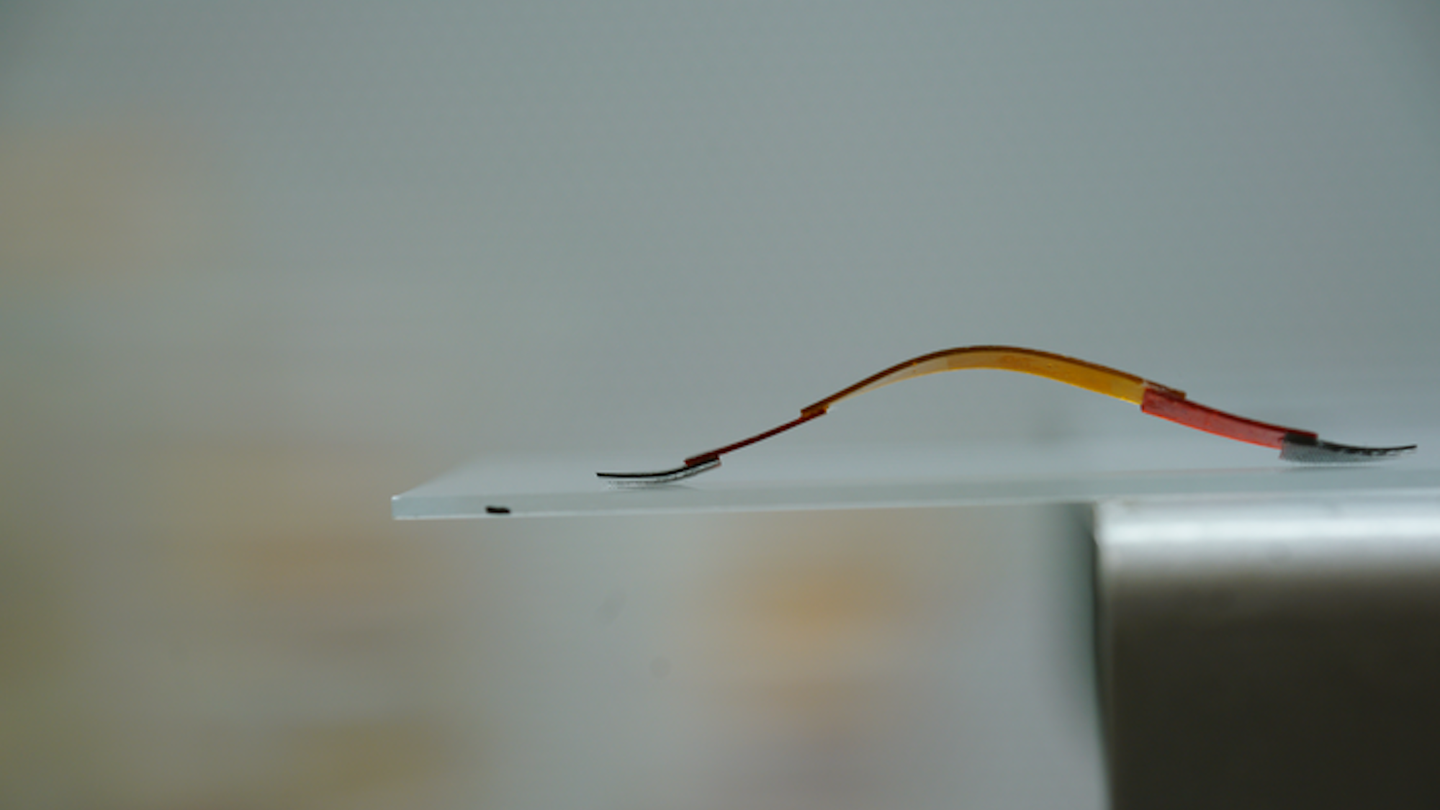
Robots partially inspired by reptiles’ impressive grip are already scaling walls and traipsing across ceilings, but so far they remain large and relatively clunky. If one could combine similar mobility within the burgeoning world of soft robotics, however, an entire world of possibilities could open for everything from the medical industry to search-and-rescue operations.
Knowing this, researchers at Canada’s University of Waterloo recently set out to do just that. As showcased in a recent issue of Cell Reports Physical Science, the team’s newly developed four centimeters long, three millimeters wide, and one millimeter thick robot draws inspiration from geckos’ grip and inchworm movements.
[Related: The newest robot dog can scale walls and ceilings.]
The physics behind geckos’ famous grip is what’s known as the van der Waals force. This occurs when molecules and electrons interact and generate electromagnetic attractions. In the reptiles’ case, their microscopic toe hairs rub against wall surfaces, generating the van der Waals force and allowing it to cling to whatever it walks across. Inchworm contractions, meanwhile, help propel it forward as it moves. By combining both inspirations, the researchers’ new creation utilizes ultraviolet light and magnetic fields to scoot along floors, up walls, and even across ceilings.
Although its maneuverability is impressive, the robot’s real strength arguably lies in being completely wireless. According to researchers, GeiwBot (a portmanteau of its gecko and worm influences) is the first of its kind to not require a hookup to an external power source. This means the sneaky little bot could one day be utilized in fields such as surgery via remote control. Other uses also include simply being able to access hard-to-reach locations, such as during search-and-rescue emergency operations.
[Related: This heat-seeking robot looks and moves like a vine.]
Despite its natural world inspirations, the actual materials used to construct GeiwBot can’t be found anywhere outside a lab. The device is built from a strip of light-responsive polymer that arcs and straightens akin to an inchworm, while liquid crystal elastomers and synthetic magnet patches mimic on either end geckos’ gravity-defying grip.
The team eventually hopes to create and hone a climbing soft robot that ditches magnets entirely for UV light-driven movement. From there, there is also the possibility of augmenting GeiwBot’s design to use near-infrared radiation in lieu of UV light to make the device more biocompatible.
In a statement, Boxin Zhao, the University of Waterloo’s Endowed Chair in Nanotechnology and paper co-author, explains that, “Even though there are still limitations to overcome, this development represents a significant milestone for utilizing biomimicry and smart materials for soft robots,” adding that, “Nature is a great source of inspiration and nanotechnology is an exciting way to apply its lessons.”
The post This tiny robot grips like a gecko and scoots like an inchworm appeared first on Popular Science.
Articles may contain affiliate links which enable us to share in the revenue of any purchases made.
from Popular Science https://ift.tt/Ek3Oq5K




0 Comments